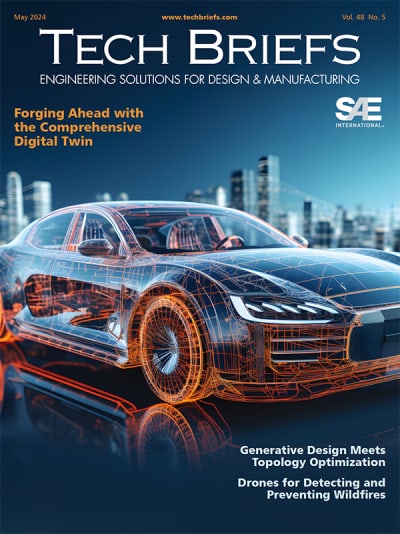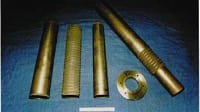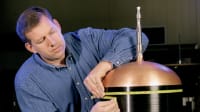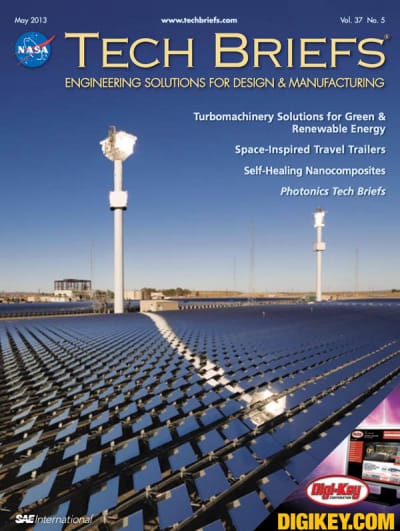Rhenium, with its high melting temperature, excellent elevated temperature properties, and lack of a ductile-to-brittle transition temperature (DBTT), is ideally suited for the hot gas components of the ACM (Attitude Control Motor), and other hightemperature applications. However, the high cost of rhenium makes fabricating these components using conventional fabrication techniques prohibitive. Therefore, near-net-shape forming techniques were investigated for producing cost-effective rhenium and rhenium alloy components for the ACM and other propulsion applications.
During this investigation, electrochemical forming (ELForm ™) techniques were evaluated for producing the hot gas components. The investigation focused on demonstrating that EL-Form processing techniques could be used to produce the ACM flow distributor. Once the EL-Form processing techniques were established, a representative rhenium flow distributor was fabricated, and samples were harvested for material properties testing at both room and elevated temperatures. As a lower cost and lighter weight alternative to an all-rhenium component, rheniumcoated graphite and carbon-carbon were also evaluated. The rhenium- coated components were thermal-cycle tested to verify that they could withstand the expected thermal loads during service.
High-temperature electroforming is based on electrochemical deposition of compact layers of metals onto a mandrel of the desired shape. Mandrels used for electro-deposition of near-net shaped parts are generally fabricated from high-density graphite. The graphite mandrel is easily machined and does not react with the molten electrolyte. For near-net shape components, the inner surface of the electroformed part replicates the polished graphite mandrel.
During processing, the mandrel itself becomes the cathode, and scrap or refined refractory metal is the anode. Refractory metal atoms from the anode material are ionized in the molten electrolytic solution, and are deposited onto the cathodic mandrel by electrochemical reduction. Rotation of the mandrel ensures uniform distribution of refractory material. The EL-Form process allows for manufacturing in an inert atmosphere with deposition rates from 0.0004 to 0.002 in./h (10.2 to 50.8 μm/h). Thicknesses typically range from microns to greater than 0.5 in. (13 mm). The refractory component produced is fabricated, dependably, to within one micron of the desired tolerances with no shrinkage or distortion as in other refractory metal manufacture techniques. The electroforming process has been used to produce solid, non-porous deposits of rhenium, iridium, niobium, tungsten, and their alloys.
This work was done by Sridhar Gorti and Richard Holmes of Marshall Space Flight Center, and John O’Dell, Timothy McKechnie, and Anatoliy Shchetkovskiy of Plasma Processes, Inc. For further information, contact Sammy Nabors, MSFC Commercialization Assistance Lead, at






















